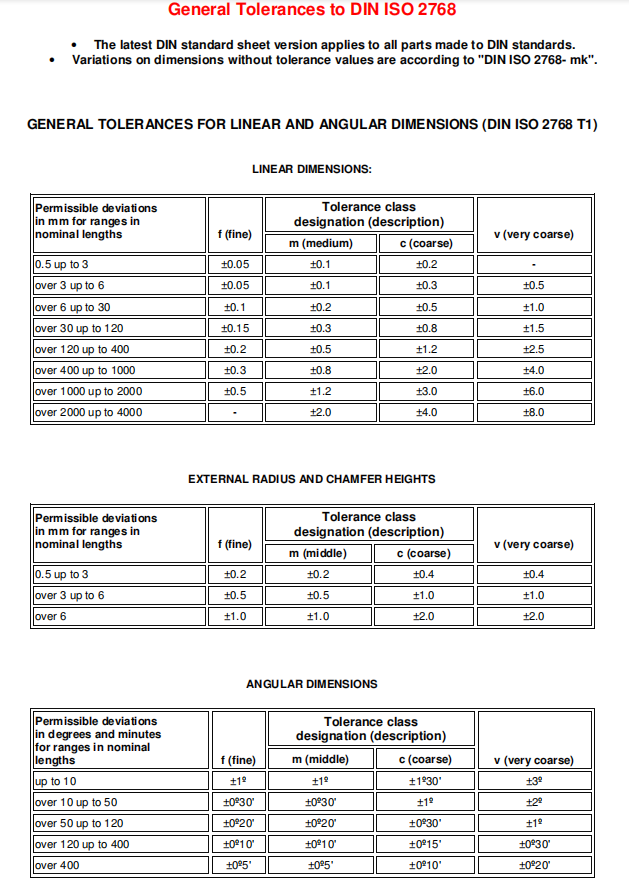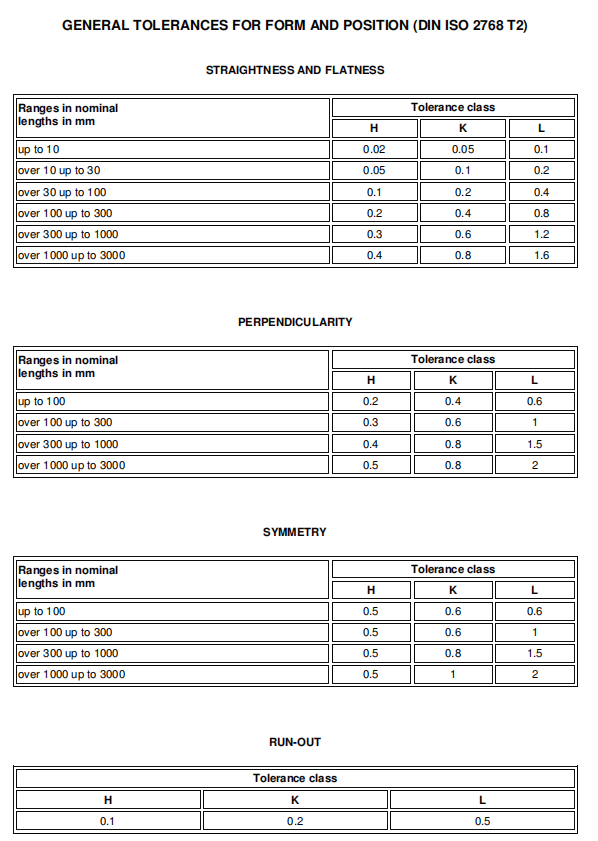Tinheo’s
CNC machining services offer you precision fabrication of plastic and metal parts in any volume. We specialize in multi-axis milling, turning, EDM, surface grinding, laser engraving and much more. In addition, you’re assured that all raw materials will meet your exact specifications because of our best-in-class testing and verification laboratory. That’s one of many reasons why we are a preferred supplier to world-class companies for their most demanding CNC machining projects.
CNC Machining – What Is It and Why Do You Need It?
CNC machining is a broad manufacturing category that includes many different computer-controlled processes where raw material is selectively removed in exact amounts to produce a near-final shape of parts. That’s why it’s considered subtractive, as opposed to additive manufacturing or 3D printing. Standard CNC machining processes include milling, turning, surface grinding and electrical discharge machining (EDM) although there are other specialized applications. Whenever a machine is digitally controlled there must always be a 3D CAD file of the part design which is used to program the machine’s movements.
CNC machining is used on many common metals such as aluminum, brass, mild and stainless steels, magnesium and titanium. It can also be used on rigid or engineering-grade plastic resins. We employ it every day to make not only finished parts but also tools and dies that are used for plastic injection molding and pressure die casting.
Because of the reliability and precision afforded by modern tools controlled with sophisticated software, CNC machining is an ideal rapid prototyping and production volume solution for making complex end-use parts with very tight tolerances.
One of the great advantages to CNC machining is its versatility. It is highly flexible and adaptable to many shapes and sizes of parts, and because there is no need for fixed tooling one part can be made just as easily as one thousand. CNC machined components are full strength and they have excellent surface finishes. You can choose to put them into service immediately or they can be further processed with additional treatments such as plating, polishing, anodizing, painting and more.
Advantages Of CNC Machining Services For Product Developers
CNC machining services at Star Rapid have many advantages for product development that can make it the ideal solution not only for rapid prototyping but also for volume production. Here is what you should consider.
Quick removal of large amounts of metal as well as engineering-grade plastic resins
Highly accurate and repeatable
Excellent for making complex geometries
Versatile
Suitable for many different kinds of substrates
Scalable volumes from one to 100,000
Low investment in tooling and preparation cost
Fast turnaround
Parts are full-strength and can be put into service immediately
Excellent surface finishes
Easily customize
We work with a wide range of plastic and metal alloy materials including magnesium, mild and stainless steel, aluminum, brass and titanium as well as rigid engineering grade plastic resins. These materials are part of our standard inventory and can be sourced for immediate availability from reliable vendors who have been thoroughly vetted and approved by us. In addition we can also provide specialty materials such as super hard alloys – just talk with our engineers to learn how we can meet your needs.
Most importantly, to ensure that your CNC machined parts meet all regulatory requirements we have an incoming materials inspection lab where we use sophisticated analytic testing instruments using Raman spectroscopy to confirm the exact chemical and physical properties of all raw materials. We leave nothing to chance for your peace of mind.
CNC Materials: How To Choose The Right Materials for CNC Machining
One of the great advantages to using CNC machining is its versatility. That’s because precision CNC milling and turning works successfully with a very wide variety of raw materials to produce finished parts. This gives design engineers many options when it comes to creating prototypes and commercial products.
Most CNC turned and milled parts are made from metal. This is because metal is strong and rigid and can withstand the rapid material removal caused by modern tools.Let’s first take a look at the most common metals used for CNC machining.
Common Metal Materials for CNC Machining
In this section, you will learn the various common metal materials that are valuable for CNC machining. We’ve listed these materials below.
Aluminum 6061
This is the most common general purpose aluminum used for CNC machining. The main alloying elements are magnesium, silicon, and iron. Like all aluminum alloys it has a good strength-to-weight ratio and is naturally resistant to atmospheric corrosion. Other advantages of this material are that it has good workability and CNC machinability, can be welded and anodized, and its wide availability means that it’s economical.
When heat-treated to a T6 temper, 6061 has a considerably higher yield strength than annealed 6061, although the price is slightly higher. One of the drawbacks to 6061 is poor corrosion resistance when exposed to salt water or other chemicals. It’s also not as strong as other aluminum alloys for more demanding applications.
6061 is a material that’s typically used for auto parts, bicycle frames, sporting goods, some aircraft components, and frames for RC vehicles.
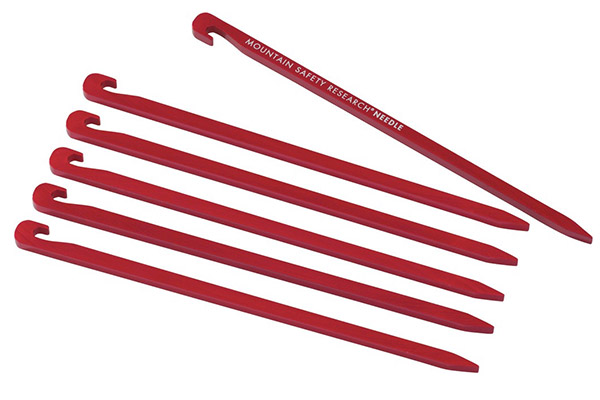
Aluminum 7075
7075 is a higher grade of aluminum, alloyed mainly with zinc. It’s one of the strongest aluminum alloys used in machining, with excellent strength-to-weight characteristics.
Because of the strength of this material it has average workability which means it tends to spring back to its original shape when being cold-formed. 7075 is also machinable and can be anodized.
Hi-end tent stakes from MSR are made with 7075-T6 aluminum.
7075 is often hardened to T6. However, it’s a poor choice for welding and this should be avoided in most cases. We routinely use 7075 T6 for making plastic injection mold tools. It’s also used for high-strength recreational equipment for mountain climbing, as well as for automotive and aerospace frames, and other stressed parts.

Brass
Brass is an alloy of copper and zinc. It’s a very soft metal, and can often be machined without lubrication. It’s a material that’s also highly workable at room temperature, so it often finds applications that doesn’t require great strength. There are many kinds of brass, largely depending on the percentage of zinc. As this percentage increases, corrosion resistance decreases.
Brass mallets are dense, non-sparking and soft.
Brass takes a high polish that looks much like gold. This is the reason it’s often found in cosmetic applications. Brass is electrically conductive but non-magnetic, and can be easily recycled.
Brass can be welded but is most often joined with low-temperature processes like brazing or soldering. Another feature of brass is that it doesn’t spark when struck with another metal, so it finds use for tools in potentially explosive environments. Interestingly, brass has natural anti-bacterial and anti-microbial properties, and its use in this regard is still being studied.
Brass is common in plumbing fittings, home decorative hardware, zippers, naval hardware, and musical instruments.
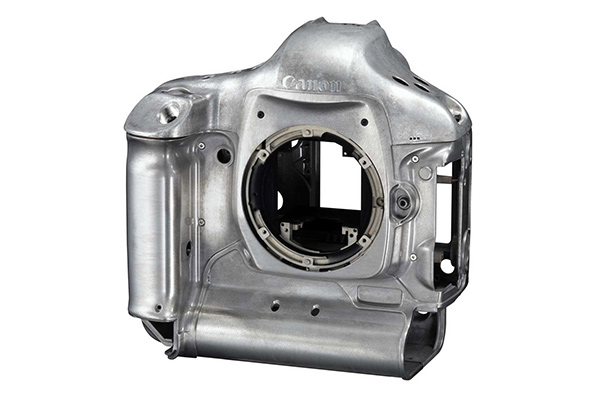
Magnesium AZ31
Magnesium AZ31 is an alloy with aluminum and zinc. It is up to 35% lighter than aluminum, with equivalent strength, but it’s also a bit more expensive.
The body of this camera was pressure die cast with magnesium.
Magnesium is a material that’s easy to machine but it’s very flammable especially in powder form, so it must be machined with a liquid lubricant. Magnesium can be anodized to improve its corrosion resistance. It’s also highly stable as a structural material and is an excellent choice for pressure die casting.
Magnesium AZ31 is often used for aircraft components in which light weight and high strength are most desirable, and can also be found in the housings for power tools, laptop cases and camera bodies.
Stainless Steel 303
There are many varieties of stainless steel, so called because of the addition of chromium that helps to deter oxidation (rust). Because all stainless steels look alike, great care must be taken to test incoming raw material with modern metrology equipment like OES detectors to confirm the characteristics of the steel you’re using for machining.
In the case of 303, sulfur is also added. This sulfur helps to make 303 the most readily machined stainless steel, but it also tends to reduce its corrosion protection somewhat.
303 isn’t a good choice for cold forming (bending), nor can it be heat treated. The presence of sulfur also means it’s not a good candidate for welding. It does have excellent machining properties but care must be taken with speeds/feeds and the sharpness of cutting tools.
303 is often used for stainless nuts and bolts, fitting, shafts, and gears. It should not, however, be used for marine grade fittings.

Stainless Steel 304
This is the most common form of stainless steel found in a wide variety of consumer and industrial products. Often called 18/8, this refers to the addition of 18% chromium and 8% nickel to the alloy. These two elements also make this machining material especially tough and non-magnetic.
304 is a material that is readily machineable, yet unlike 303 it can be welded. It’s also more corrosion resistant in most normal (non-chemical) environments. For machinists, it should be processed with very sharp cutting tools, and not contaminated with other metals.
Screws, nuts and other attachment hardware is often made from 304 stainless.
Stainless Steel 304 is an excellent material choice for kitchen accessories and cutlery, tanks, and pipes used in industry, architecture, and automotive trim.
Although it’s possible to plastic injection mold Ultem, we used CNC milling and turning for this project. This is because the customer only needed a few parts and we had to produce them fast while also maintaining tight tolerances.

Stainless Steel 316
The addition of molybdenum makes 316 even more corrosion resistant, so it’s often considered a marine-grade stainless steel. It’s also tough, and easy to weld.
316 stainless was used to make this shackle for a boat.
316 is used in architectural and marine fittings, for industrial pipes and tanks, automotive trim, and kitchen cutlery.
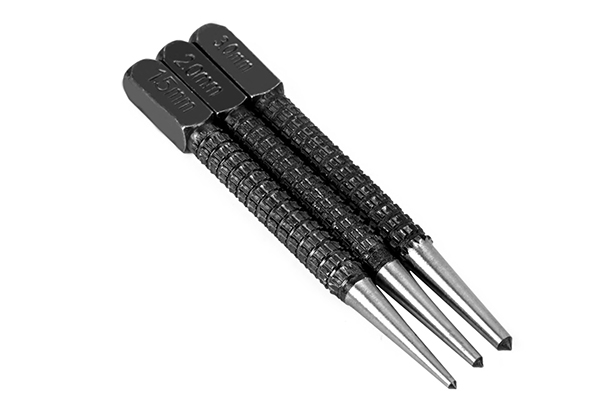
Carbon Steel 1045
This is a common grade of mild steel, i.e., not stainless. It’s typically less expensive than stainless steels, but considerably stronger and tougher. It’s easy to machine and to weld, and it can be work hardened and heat treated for various hardnesses.
Carbon steel can stand up to repeated hammer blows
1045 steel (in the European standard, C45) is used in many industrial applications for nuts and bolts, gears, shafts, connecting rods, and other mechanical parts requiring a higher degree of toughness and strength than stainless. It’s also used in architecture, but if exposed to the environment it will usually be surface treated to prevent rust.

Titanium
Titanium is well-known for possessing high strength, light weight, toughness, and corrosion resistance. It can be welded, passivated and anodized for increased protection and to improve its appearance. Titanium doesn’t polish especially well, is a poor conductor of electricity but a good conductor of heat. It’s a tough material to machine and only specialty cutters should be used.
This replacement hip joint and socket were 3D printed from titanium
Titanium is generally bio-compatible, and has a very high melting point. Although more expensive than other metals in commercial form, it’s a material used in machining that’s actually very abundant in the Earth’s crust but is more difficult to refine.
Titanium works well for powder bed 3D metal printing. It finds applications in the most demanding aerospace, military, bio-medical, and industrial fields, where it stands up well against heat and corrosive acids.
Common Plastic Materials for CNC Machining
Plastic resins used for CNC milling and turning must be rigid enough to hold their shape while they’re clamped in a vise or fixture. That’s one consideration that narrows the field of available materials. The following types of plastic resin have proven themselves over the years because they are stable, strong, easily machined, and produce great finished parts and prototypes.
ABS
ABS is an excellent choice for CNC machining. ABS is a tough, impact-resistant plastic that’s also resistant to chemicals and electrical current.
ABS is easy to color so it produces good cosmetic results. Because of its versatility and strength, it’s the most common plastic that we use for rapid prototyping. You’ll find it in automotive components, power tools, toys and sporting goods, among many other applications. ABS is less expensive than other engineering plastics like PEEK or Ultem but it doesn’t withstand high temperatures for long periods of time.
Nylon
Nylon has many of the same desirable characteristics as ABS. It has greater tensile strength which is why we use it for fabric and rope. Nylon and ABS resins are often mixed together, along with glass fibers, to enhance their desirable properties. Nylon can replace many mechanical parts, and because it has good surface lubrication it’s used for moving gears and sliding components. One drawback to nylon is that it does absorb moisture over time so it’s not suitable for marine applications. And it can be tough on cutting tools during machining.
PMMA Acrylic
PMMA is a rigid, transparent resin used as a substitute for glass or when making other clear optical parts. It resists scratching but is less impact resistant than polycarbonate. One advantage of PMMA is that it doesn’t contain Bisphenol-A, so it can be used for food storage. After machining, acrylic shows a hazy, matte surface. The surface can be treated with vapor polishing, which we do at Star Rapid, to make it optically clear. One thing to be aware of about acrylic is that it’s susceptible to heat deformation, so it should be stress-relieved before machining. PMMA is used for display screens, light pipes, lenses, clear enclosures, food storage, and to replace glass if strength is not an issue.
PEEK
PEEK is a true high-strength and stable engineering plastic. It can be used as a substitute for metal in many applications and it can withstand prolonged exposure to high temperatures. PEEK is used for advanced medical, aerospace, and electronic components. It’s also a great choice for lightweight fixtures because it doesn’t tend to creep, or deform, over time like other resins. PEEK is much more expensive than many other plastics so it tends to be used only when nothing else will do. In many cases, it’s necessary to anneal it during the machining process, or else it will form stress fractures.
UHMWPE
This long name means “ultra high molecular weight polyethylene”. There are in fact several different kinds of PE, with different mechanical and chemical properties. UHMWPE is especially hard and strong, very resistant to chemicals, and has a naturally slippery surface. All of these traits make UHMWPE the standard of care for joint replacements. This material is also used in marine environments, food and chemical processing, and for gear trains and conveyor belts.
Other CNC Machining Materials
In this chart, you will find additional CNC machining materials that are found in the industry.
|
Fiber
|
Carbon Fiber
|
CFRP, CRP, CFRTP
|
|
Metal
|
Aluminum – 1050
|
AL 1050
|
|
Metal
|
Aluminum – 1060
|
AL 1060
|
|
Metal
|
Aluminum – 2024
|
AL 2024
|
|
Metal
|
Aluminum – 5052-H11
|
AL 5052-H11
|
|
Metal
|
Aluminum – 5083
|
AL 5083
|
|
Metal
|
Aluminum – 6061
|
AL 6061
|
|
Metal
|
Aluminum – 6082
|
AL 6082
|
|
Metal
|
Aluminum – 7075
|
AL 7075
|
|
Metal
|
Aluminum – bronze
|
AL + Br
|
|
Metal
|
Aluminum – MIC-6
|
AL – MIC-6
|
|
Metal
|
Aluminum – QC-10
|
AL QC-10
|
|
Metal
|
Brass
|
Cu + Zn
|
|
Metal
|
Copper
|
Cu
|
|
Metal
|
Copper – beryllium
|
Cu + Be
|
|
Metal
|
Copper – chrome
|
Cu +Cr
|
|
Metal
|
Copper – tungsten
|
Cu + W
|
|
Metal
|
Magnesium
|
Mg
|
|
Metal
|
Magnesium alloy
|
|
|
Metal
|
Phosphor bronze
|
Cu + Sn + P
|
|
Metal
|
Steel – Stainless 303
|
SS 303
|
|
Metal
|
Steel – Stainless 304
|
SS 304
|
|
Metal
|
Steel – Stainless 316
|
SS 316
|
|
Metal
|
Steel – Stainless 410
|
SS 410
|
|
Metal
|
Steel – Stainless 431
|
SS 431
|
|
Metal
|
Steel – Stainless 440
|
SS 440
|
|
Metal
|
Steel – Stainless 630
|
SS 630
|
|
Metal
|
Steel 1040
|
SS 1040
|
|
Metal
|
Steel 45
|
SS 45
|
|
Metal
|
Steel D2
|
SS D2
|
|
Metal
|
Tin bronze
|
|
|
Metal
|
Titanium
|
Ti
|
|
Metal
|
Titanium alloy
|
|
|
Metal
|
Zinc
|
Zn
|
|
Plastic
|
Acrylonitrile butadiene styrene
|
ABS
|
|
Plastic
|
Acrylonitrile butadiene styrene
|
ABS – high temp
|
|
Plastic
|
Acrylonitrile butadiene styrene
|
ABS – anti static
|
|
Plastic
|
Acrylonitrile butadiene styrene + Polycarbonate
|
ABS + PC
|
|
Plastic
|
High-density polyethylene
|
HDPE, PEHD
|
|
Plastic
|
Nylon 6
|
PA6
|
|
Plastic
|
Nylon 6 + 30% Glass Fill
|
PA6 + 30% GF
|
|
Plastic
|
Nylon 6-6 + 30% Glass Fill
|
PA66 + 30% GF
|
|
Plastic
|
Nylon 6-6 Polyamide
|
PA66
|
|
Plastic
|
Polybutylene terephthalate
|
PBT
|
|
Plastic
|
Polycarbonate
|
PC
|
|
Plastic
|
Polycarbonate – Glass fill
|
PC + GF
|
|
Plastic
|
Polycarbonate + 30% Glass fill
|
PC + 30 % GF
|
|
Plastic
|
Polyether ether ketone
|
PEEK
|
|
Plastic
|
Polyetherimide
|
PEI
|
|
Plastic
|
Polyetherimide + 30% Glass Fill
|
Ultem 1000 + 30% GF
|
|
Plastic
|
Polyetherimide + Ultem 1000
|
PEI + Ultem 1000
|
|
Plastic
|
Polyethylene
|
PE
|
|
Plastic
|
Polyethylene terephthalate
|
PET
|
|
Plastic
|
Polymethyl methacrylate – acrylic
|
PMMA – Acrylic
|
|
Plastic
|
Polyoxybenzylmethylenglycolanhydride
|
Bakelite
|
|
Plastic
|
Polyoxymethylene
|
POM
|
|
Plastic
|
Polyphenylene sulfide
|
PPS
|
|
Plastic
|
Polyphenylene sulfide + Glass Fill
|
PPS + GF
|
|
Plastic
|
Polyphenylsulfone
|
PPSU
|
|
Plastic
|
Polypropylene
|
PP
|
|
Plastic
|
Polytetrafluoroethylene
|
PTFE
|
|
Plastic
|
Polyvinyl chloride
|
PVC
|
|
Plastic
|
Polyvinyl chloride + White/Grey
|
PVC – White/Gray
|
|
Plastic
|
Polyvinylidene fluoride
|
PVDF
|
|
Superalloy
|
Waspaloy
|
Waspalloy
|
How To Choose The Right CNC Machining Materials? Our Step-by-Step Guidelines
The above information can help inform your decision about what material will best suit your application, bearing in mind that in many cases more than one choice will work just fine.
We always advise our partner clients to consider the environment that the part will be used in, and what kinds of forces it will be subjected to throughout its service life. Although there are many variables, in our experience these are the areas that have the largest effect on raw material suitability.
Moisture
Does the product need to withstand salt or freshwater? Some metals and plastics are naturally resistant to corrosion, while other materials may need additional surface treatments such as painting, plating, or anodizing. And yes, even many types of plastic, such as nylon, can absorb water over time which will lead to premature part failure.
Strength
There are several different ways to understand the concept of strength as it applies to material science, and the subject is a very complex and technical one. In general, product engineers are usually concerned about:
Tensile strength: How well does the material resist a pulling force?
Compression or load bearing: How well does the material resist a constant load?
Toughness: How well does the material resist tearing?
Elasticity: How well does the material snap back to its original shape after a load is removed?
All materials differ in the various types of strength that they exhibit, so it’s critical to know what your tolerable limits are and then choose a material that has an adequate safety factor well above those limits.
The good news is that there are many online material data websites that provide comprehensive technical information about all available commercial metal and plastic, so these should be consulted in advance.
Heat
All materials expand and contract in the presence of heat. This could potentially affect your part if it’s going to be subjected to many heating and cooling cycles. As parts get hotter they also get softer and more flexible before they reach their melting point. Heat can also cause some plastic resins to outgas or to undergo thermal degradation that destroys its chemical bonds. Therefore, to prevent critical part failure always use a material that will be thermally stable at a temperature far above your expected working conditions.
Corrosion Resistance
Corrosion involves much more than just exposure to water. Any adverse chemical reaction with another foreign substance could potentially cause part failure. These substances include oils, reagents, acids, salts, alcohols, cleaners, etc. Consult the relevant material data sheets to verify that your metal or plastic can withstand any expected chemical exposure.
Machinability
Not so much an issue with relatively soft plastic, machinability can be a big deal with certain types of metal or carbon fiber. Extremely tough materials, and that does include carbon fiber, can quickly destroy expensive cutting tools. Others will require very careful control of cutting speed and feed rates. In addition, some materials can be processed faster than others. For longer production runs, using a metal that machines quickly can save significant time and money over the long term.
Cost
Obviously there are cost considerations with all raw materials. However, we strongly encourage all product developers to consider that saving cost by choosing a lower grade of material is never a good idea in the long term. Rather, choose the best material that you can afford which still offers all the necessary functionality. This helps to guarantee that the finished part will be durable.
CNC Turning Services
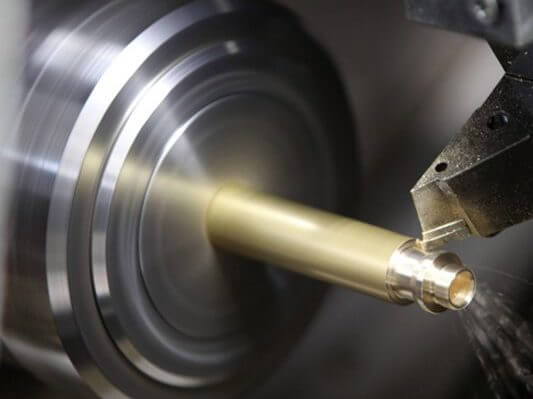
What is CNC turning?
CNC turning is a particular form of precision machining in which a cutter removes material by making contact with the spinning workpiece. The movement of the machinery is controlled by computer instructions, allowing for extreme precision and repeatability.
Turning is different to CNC milling, in which the cutting tool rotates and is directed from multiple angles at the workpiece, which is usually stationary. Because CNC turning involves rotating the workpiece in a chuck, it is generally used to create round or tubular shapes, achieving far more accurate rounded surfaces than would be possible with CNC milling or other processes.
The tooling that is used with a CNC lathe machine is mounted to a turret. This component is programmed to make certain movements and remove material from raw materials until the desired 3D model is formed.
Like CNC milling, CNC turning can be used for the rapid manufacture of either prototypes or end-use parts.
Tinheo’s various CNC services, CNC turning is frequently requested for a certain category of parts. Turning is a CNC machining process in which the workpiece is rotated at speed in a chuck. Unlike with CNC milling, the cutting tool does not spin.
Turning can be carried out on metals like aluminum, magnesium, steel, stainless steel, brass, copper, bronze, titanium and nickel alloy, as well as plastics like nylon, polycarbonate, ABS, POM, PP, PMMA, PTFE, PEI, PEEK. CNC turning machines are also known as lathe machines.
Advantages of CNC turning
1. Cylindrical parts
CNC turning machines are ideal for creating round or cylindrical parts. Lathes create these parts quickly, accurately and with excellent repeatability.
2. Range of processes
Although generally used for parts of a certain shape, CNC turning can still be used to carry out a variety of cuts, including drilling, boring, threading and knurling.

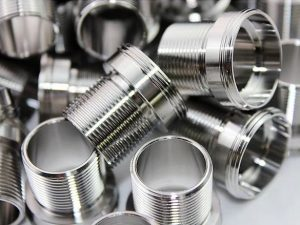
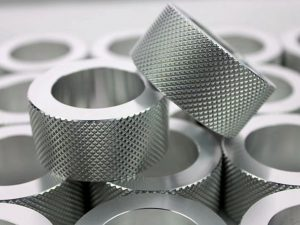
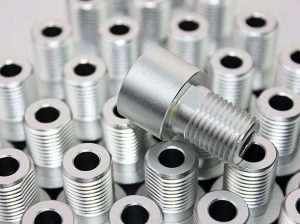
CNC Milling Services
What is CNC milling?
CNC milling is just one of the Computer Numerical Control machining processes available. Milling is a particular form of precision machining. Milling uses a cutter that removes material by moving into the workpiece at an angle. The movement of the cutter is controlled by computer instructions, allowing for extreme precision and repeatability.
CNC Milling is different from CNC turning, another popular CNC machining service. Turning uses a single-point cutting tool to cut the workpieces from block or bar materials while they rotate at speed in a chuck. Unlike CNC milling, CNC turning is generally used to create round or tubular shapes.
CNC milling can be used for rapidly manufacturing either prototypes or end-use parts.
How CNC milling works
Like other CNC machining processes, CNC milling begins with designers creating a digital part using CAD (Computer Aided Design) software. The file is then converted into “G Code,” which can be recognized by a CNC mill.
CNC mills have a “worktable” and work holding device to keep a block of material — known as the “workpiece” — in place. The worktable may or may not move, depending on the style of the milling machine.
During the CNC milling process, the rapidly rotating cutting tool makes contact with the workpiece, cutting away material. The cutting tool moves according to the G-Code instructions, cutting in the programmed places until the part is finished. Some CNC mills use moving worktables to create even more cutting angles.
CNC mills can cut through hard metals such as stainless steel. This makes them more versatile than CNC routers which, despite being similar to 3-axis mills, are less capable of penetrating hard materials.
CNC mills are different from CNC lathes or turning centers, where the workpieces rotate rather than the cutting tools.
Different types of CNC mill
Typical CNC Milling Parts That We Offer
CNC mills are often defined by their number of axes. More axes mean they can move their tool and/or workpieces in more ways. This enhanced cutting flexibility results in the ability to make more complex parts in a shorter time.
3-axis: Standard CNC mills have 3 axes, allowing the spindle (and attached cutting tools) to travel along the X, Y, and Z axes. If the cutting tool cannot reach an area of the part, the part must be removed and manually rotated.
4-axis: Some CNC mills incorporate an extra degree of movement by rotating on a vertical axis. This enables greater flexibility and the ability to create more complex parts.
5-axis: The most advanced type of widely used CNC mill is the 5-axis mill, which incorporates two extra degrees of movement, often by adding rotation to the worktable and spindle. Parts usually don’t require multiple setups since the mill can manipulate them into different positions.
Cutting tools for CNC mills
CNC mills can be fitted with different cutters/tools to enable different types of cutting. These include end mills, face mills, slab mills, fly cutters, ball cutters, hollow mills, and roughing end mills.
Typical CNC Milling Parts That We Offer
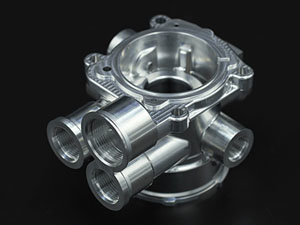
We offer CNC milling services for any type of custom CNC parts, whether plastics or metals, simple or complex. Our precision 3-, 4-, and 5-axis CNC machines, combined with other advanced capabilities and our experienced team, can provide high-quality CNC machined parts and fast delivery. We guarantee your CNC milling projects will be handled smoothly by our in-house CNC machining department and supplier network. As a result, you can focus on bringing your product to market. If you need a reliable CNC milling company, Tinheo will never let you down!
Our CNC milling service is a highly flexible way to create a prototype or manufacture high-volume end-used parts. Able to handle a wide range of milling materials, our CNC machining capabilities are ideal for most projects. Our CNC experts know how to cut your parts fast to reduce costs. They are also skilled in milling the complex geometry to tight tolerances that custom-designed milled parts in different materials require. We have delivered a million+ high-quality CNC parts to our worldwide customers.
Plastic and Metal Valves
Parts like valves and engine houses require complex geometry and tight tolerances. We can make such parts with our 5-axis CNC milling.
EDM / Wire EDM And Surface Grinding
Electrical discharge machining (EDM) is an essential manufacturing process used primarily on tool steels for plastic injection molding or pressure die casting. EDM uses a conductive graphite or copper electrode submerged in a dielectric bath of water or oil. When a high voltage current is applied to the electrode it sparks against the tool wall, etching away at the surface to produce deep holes, ribs, undercuts and surface textures that are difficult to machine conventionally. When done properly, EDM can produce excellent surface finishes with tight tolerances, virtually eliminating the need for secondary polishing.
Surface grinding is an automated machining process used to make extremely flat and smooth surfaces. In this method, the workpiece is held in a fixture and then reciprocated across the face of a precision grinding wheel.
CNC Machining Tolerances
Our general tolerances for CNC machining of metals is DIN-2768-1-fine and for plastics, DIN-2768-1-medium. Since tolerances and dimensions can be greatly affected by part geometry and type of material, we highly recommend consulting with our engineers before starting any project. We work with you every step of the way to ensure that your parts meet and exceed your expectations.
